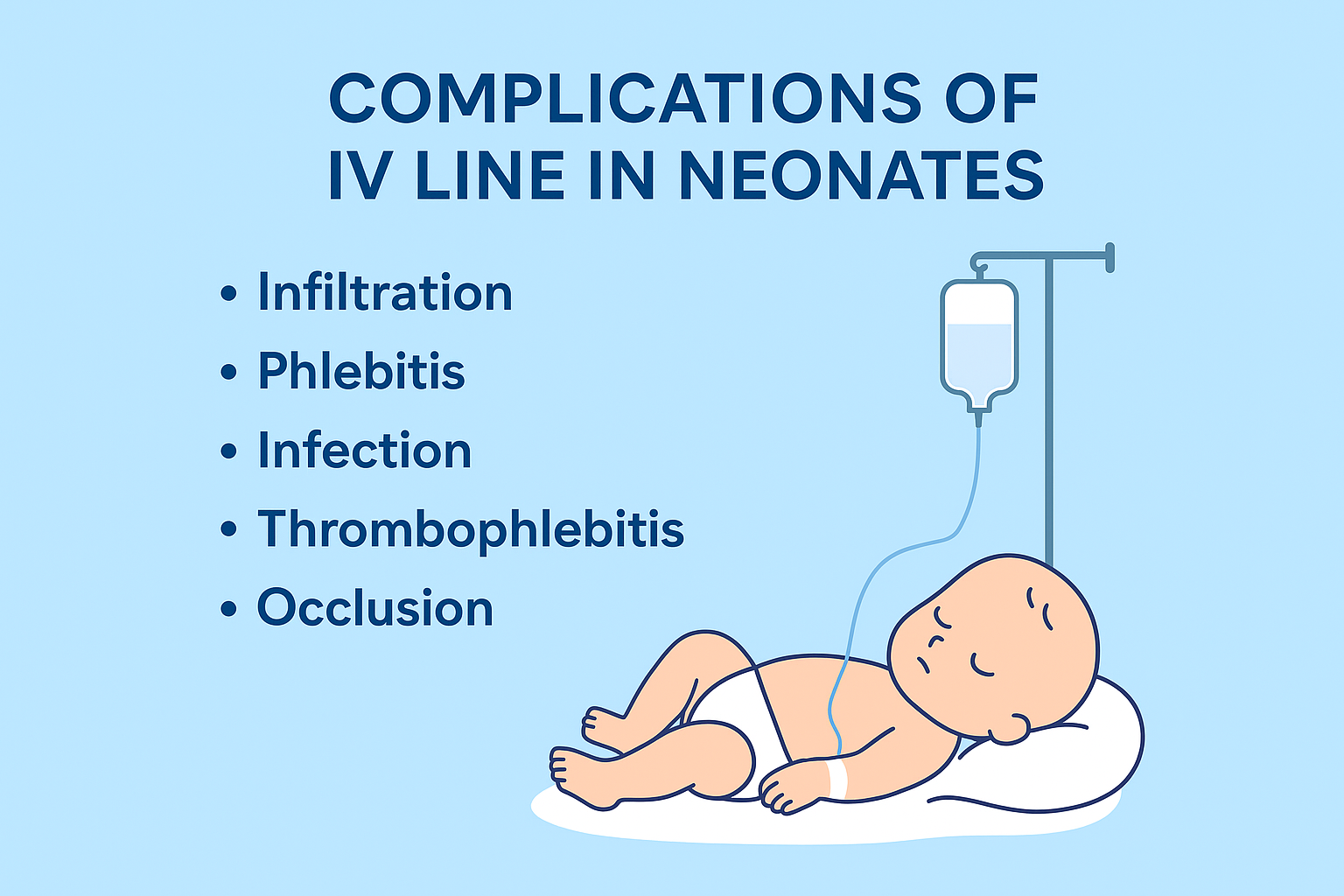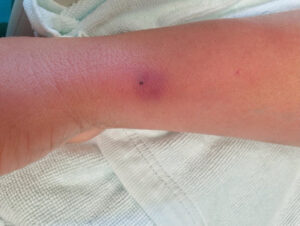Medical
Abdul Qadeer, Complications in IV therapy, IV line infection risks, IV line risks in newborns, IV management in neonates, Neonatal care Pakistan, Neonatal intensive care, Neonatal IV complications, Newborn hospital care, Nursing challenges neonates, Safe neonatal practices
Abdul Qadeer
0 Comments
Complications of IV Line in Neonates: Risks, Prevention, and Management

Intravenous (IV) therapy is one of the most common and essential medical procedures in neonatal care. For critically ill or premature babies, IV lines are lifesaving, providing hydration, nutrition, and medications when oral feeding is not possible. However, like all medical interventions, IV lines in neonates carry certain risks. Understanding the possible complications of IV lines in neonates is crucial for doctors, nurses, and caregivers to ensure patient safety and minimize harm.
This article explores the common complications, risk factors, prevention strategies, and management approaches related to IV lines in newborns.
Why Neonates Are at Higher Risk
Newborns, particularly preterm infants, have unique physiological challenges:
Fragile veins – Thin, delicate, and difficult-to-access veins increase the risk of injury.
Immature skin – Neonatal skin is sensitive, making it prone to infection and trauma.
Limited communication – Babies cannot express discomfort, so complications may go unnoticed.
Immature immunity – Increases the risk of infections and sepsis.
These factors make IV line care in neonates a highly delicate procedure requiring vigilance and skill.
Common Complications of IV Lines in Neonates
1. Infiltration and Extravasation

Infiltration occurs when IV fluid leaks into the surrounding tissue instead of the vein.
Extravasation is a severe form where vesicant (tissue-damaging) drugs leak, causing tissue necrosis.
Signs: Swelling, redness, coolness, pain (baby may cry excessively), and poor IV flow.
Risks: Tissue necrosis, ulceration, and long-term scarring.
2. Phlebitis

Phlebitis is the inflammation of the vein due to mechanical irritation, chemical irritation, or infection.
Signs: Redness, swelling, warmth along the vein, and tenderness.
Risks: Discomfort, vein damage, and interruption of therapy.
3. Infection and Sepsis

Neonates are highly vulnerable to bloodstream infections through IV catheters. Poor aseptic technique, prolonged cannula use, or contamination can lead to local infection or systemic sepsis.
Signs: Redness at insertion site, pus, fever, lethargy, poor feeding.
Risks: Life-threatening septicemia, requiring urgent intervention.
4. Thrombophlebitis

Blood clot formation in the vein around the IV cannula may occur due to irritation, stasis, or infection.
Signs: Swelling, hardness of vein, redness, and pain.
Risks: Risk of embolism or blockage of venous access.
5. Occlusion and Blockage
Cannula blockage due to clot formation or precipitate in the IV line disrupts treatment.
Signs: IV line stops flowing, resistance while flushing.
Risks: Delay in medication and nutrition delivery.
6. Hematoma

When blood leaks into surrounding tissues due to vein injury during insertion, a hematoma may form.
Signs: Bruising, swelling, tenderness.
Risks: Pain, difficulty in future IV insertions at the site.
7. Air Embolism (Rare but Serious)
If air enters the bloodstream through an IV line, it can cause air embolism, which is rare but potentially fatal.
Signs: Sudden respiratory distress, cyanosis, low blood pressure.
Risks: Cardiac arrest, brain damage, or death if not managed immediately.
Prevention Strategies

Preventing IV complications in neonates requires strict adherence to infection control, careful monitoring, and skillful practice.
Aseptic technique – Hand hygiene, sterile gloves, and disinfected equipment are essential.
Careful vein selection – Use the least traumatic site possible; avoid joints and fragile veins.
Secure fixation – Proper taping to prevent accidental dislodgement.
Regular monitoring – Check the site every hour for signs of swelling, redness, or leakage.
Limit dwell time – Peripheral IV lines should be replaced if signs of irritation appear.
Use infusion pumps – To regulate flow rates and reduce risks of infiltration.
Educating staff and parents – Nurses should be trained, and parents should be informed to report swelling or baby’s discomfort.
Management of Complications

Infiltration/Extravasation: Stop infusion immediately, elevate the limb, apply warm or cold compress depending on the drug, and consider antidotes for vesicant drugs.
Phlebitis: Remove IV line, apply warm compress, and consider topical anti-inflammatory agents.
Infection: Remove IV line, send cultures, and start antibiotics if systemic infection is suspected.
Thrombophlebitis: Remove cannula, apply warm compress, and treat with anticoagulation if severe.
Hematoma: Elevate limb, apply cold compress, and avoid the site for reinsertion.
Air embolism: Clamp the IV line, place neonate in left lateral Trendelenburg position, and provide oxygen and resuscitation support.
Conclusion
IV lines in neonates are lifesaving but not risk-free. Complications such as infiltration, infection, phlebitis, and extravasation can have serious consequences if not detected early. Preventive measures, vigilant monitoring, and timely management are the keys to ensuring safe IV therapy in newborns.
For healthcare professionals, particularly those in neonatal intensive care units (NICUs), understanding these risks is crucial to improving patient outcomes, reducing morbidity, and building trust with families.













Post Comment